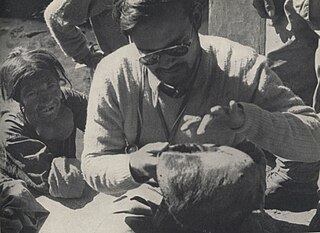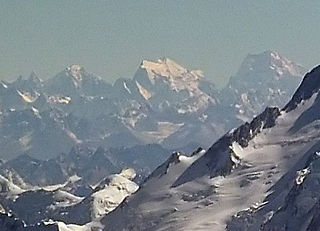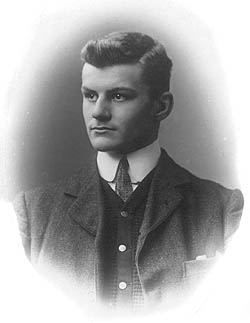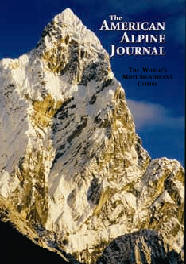 | |
| Editor | Nandini Purandare |
|---|---|
| Categories | Climbing, mountaineering |
| Frequency | Annual |
| Publisher | Himalayan Club |
| Founded | 1929 |
| Country | India |
| Website | himalayanclub.org/journal |
The Himalayan Journal is the annual magazine of the Himalayan Club in India.
 | |
| Editor | Nandini Purandare |
|---|---|
| Categories | Climbing, mountaineering |
| Frequency | Annual |
| Publisher | Himalayan Club |
| Founded | 1929 |
| Country | India |
| Website | himalayanclub.org/journal |
The Himalayan Journal is the annual magazine of the Himalayan Club in India.
The magazine was established in 1929. The first editor-in-chief was the English geographer Kenneth Mason. He was a surveyor operating from Shimla. Mason later continued editing from England. Subsequent editors were C.W.F. Noyce, H.W. Tobin, and Trevor Braham. In 1960, K. Biswas took over as the first Indian editor. From 1969 to 1979 and from 1987 to 1989 Soli S. Mehta was editor. Harish Kapadia was editor from 1980 to 1986 and again from 1990 to 2010. [1] Since 2014, Nandini Purandare has been the editor, the first woman to hold this post. [2]
The following persons have been editor-in-chief of the magazine:

Kangchenjunga, also spelled Kanchenjunga, Kanchanjanghā and Khangchendzonga, is the third-highest mountain in the world. Its summit lies at 8,586 m (28,169 ft) in a section of the Himalayas, the Kangchenjunga Himal, which is bounded in the west by the Tamur River, in the north by the Lhonak River and Jongsang La, and in the east by the Teesta River. It lies in the border region between Koshi Province of Nepal and Sikkim state of India, with three of the five peaks, namely Main, Central and South, directly on the border, and the peaks West and Kangbachen in Nepal's Taplejung District.

Biswamoy Biswas was an Indian ornithologist who was born in Calcutta, the son of a professor of geology. In 1947, he was awarded a three-year fellowship by Sunderlal Hora, then director of the Zoological Survey of India (ZSI). It enabled him to study at the British Museum, at the Berlin Zoological Museum under Erwin Stresemann and also at the American Museum of Natural History under Ernst Mayr.
K12 is the second highest peak in the Saltoro Mountains, a subrange of the Karakoram range in the Siachen region of Ladakh. Its name comes from its designation given during the original survey of the Karakoram range. In 1984, an Indian army expedition under Colonel Prem Chand took hold of this peak, from the side of Siachen glacier by traversing from the west.

Saltoro Kangri, previously known as Peak 36, stands as the highest peak within the Saltoro Mountains subrange, which is part of the larger Karakoram range. This subrange is also referred to as the Saltoro Range and is situated within the Karakoram region. The term "Saltoro Kangri" typically encompasses both of its twin peaks, Saltoro Kangri I and Saltoro Kangri II, which are connected by a saddle. When comparing heights, the generic term "Saltoro Kangri" is used for the taller of the two peaks, Saltoro Kangri I. This peak ranks as the 31st highest mountain globally and is located in the remote reaches of the Karakoram. It lies on the Actual Ground Position Line, dividing Indian-controlled territory in the Siachen region from Pakistani-controlled territory to the west of the Saltoro Range.

Harish Kapadia is a Himalayan mountaineer, author and long-time editor of the Himalayan Journal from India.

Lieut-Colonel Kenneth Mason MC was a British soldier and explorer notable as the first statutory professor of Geography at the University of Oxford. His work surveying the Himalayas was rewarded in 1927 with a Royal Geographical Society Founder's Medal, the citation reading for his connection between the surveys of India and Russian Turkestan, and his leadership of the Shaksgam Expedition.

The American Alpine Journal is an annual magazine published by the American Alpine Club. Its mission is "to document and communicate mountain exploration." The headquarters is in Golden, Colorado.

Trisul is a group of three Himalayan mountain peaks of western Kumaun, Uttarakhand, with the highest reaching 7120m. The three peaks resemble a trident - in Sanskrit, Trishula, trident, is the weapon of Shiva. The Trishul group forms the southwest corner of the ring of peaks enclosing the Nanda Devi Sanctuary, about 15 kilometres (9 mi) west-southwest of Nanda Devi itself. The main peak, Trisul I, was the first peak over 7,000 m (22,970 ft) to have ever been climbed, in 1907.
Janusz Kurczab was a Polish fencer, mountaineer and expedition leader. He competed in the individual and team épée events at the 1960 Summer Olympics. Expert in the history of Himalayism, editor of the online climbing website wspinanie.pl. Responsible for the creation of a Central Mountain Archives in the multimedia mountain center "Crown of the Earth" in Zawoja.

Trevor Hyam Braham was a British Himalayan explorer and mountaineer, mostly active during the mid-20th century.

Gurdial Singh was an Indian schoolteacher and mountaineer who led the first mountaineering expedition of independent India to Trisul in 1951. In 1958, he led the team that made the first ascent of Mrigthuni . In 1965, he was a member of the first successful Indian expedition team to climb Mount Everest.

Romilly Lisle Holdsworth, commonly known as R. L. Holdsworth, was an English scholar, academic, educationalist, cricketer and a distinguished Himalayan mountaineer. He was a member of the first expedition to Kamet in 1931, which included other stalwarts such as Eric Shipton and Frank Smythe. Holdsworth, along with Shipton and Smythe, are credited with the discovery of the Valley of Flowers, now a UNESCO World Heritage Site, during their return from Kamet.
The Chip Chap River is a tributary of the Shyok River that flows from the disputed Aksai Chin region administered by China to Ladakh in India. It originates at the eastern edge of the Depsang Plains and flows west, skirting around the Depsang Plains in the north. It discharges into the Shyok River, forming one of the upstream tributaries of the Indus River.
Apsarasas Kangri is a mountain in the Siachen subrange of the Karakoram mountain range. With an elevation of 7,245 m (23,770 ft) it is the 96th highest mountain in the world. Apsarasas Kangri is located within the broader Kashmir region disputed between India, Pakistan and China. It is situated on the border between the areas controlled by China as part of the Xinjiang autonomous region, and the Siachen Glacier controlled by India as part of Ladakh.

The Himalayan Club is an organization founded in India in 1928 along the lines of the Alpine Club. The stated mission of the organization was "to encourage and assist Himalayan travel and exploration, and to extend knowledge of the Himalaya and adjoining mountain ranges through science, art, literature and sport." The Club publishes a journal, the Himalayan Journal and has a library. Chewang Motup Goba from Ladakh is the current president of The Himalayan Club.
The role of The Doon School in Indian mountaineering describes the formative links between The Doon School, an all-boys boarding school in Dehradun, India and early post-Independence Indian mountaineering. From the 1940s onwards, Doon's masters and students like A.E. Foot, R.L. Holdsworth, J.A.K. Martyn, Gurdial Singh, Jack Gibson, Aamir Ali, Hari Dang, Nandu Jayal, were among the first to go on major Himalayan expeditions in a newly independent nation. These early expeditions contributed towards laying the foundation of mountaineering in an independent India.

Panwali Dwar is a mountain of the Kumaun Himalayas located in the Bageshwar district of Uttarakhand, India. The elevation of Panwali Dwar is 6,683 metres (21,926 ft) and its prominence is 763 metres (2,503 ft). It is 55th highest located entirely within the Uttarakhand. Nanda Devi, is the highest mountain in this category. It lies on southern wall of Nanda devi sanctuary. Its nearest higher neighbor Maiktoli 6,803 metres (22,320 ft) lies 8.2 km WSW. It is located 2.6 km SW of Nanda Khat 6,611 metres (21,690 ft) and 9.2 km NE lies Nanda Devi East 7,434 metres (24,390 ft).
The Darbuk–Shyok–DBO Road, also called the Sub-Sector North Road, is a strategic all-weather road in eastern Ladakh in India, close to the Line of Actual Control with China. It connects Ladakh's capital city Leh, via the villages of Darbuk and Shyok at southern Shyok River Valley, with the Daulat Beg Oldi (DBO) post near the northern border. The 220-km long section between Shyok and DBO was constructed between 2000 and 2019 by India's Border Roads Organisation (BRO). The DS-DBO Road has reduced the travel time between Leh to DBO from 2 days to 6 hours. In January 2023, BRO announced that it is constructing the DSDBO tunnel on this route.
Tharkot is a mountain of the Kumaon Himalaya in Uttarakhand India. It is situated near the southern rim of Nanda Devi Sanctuary. The elevation of Tharkot is 6,099 metres (20,010 ft) and its prominence is 671 metres (2,201 ft). It is joint 160th highest located entirely within the Uttrakhand. Nanda Devi, is the highest mountain in this category. It lies 7.3 km SSW of Mrigthuni 6,855 metres (22,490 ft). Devtoli 6,788 metres (22,270 ft) lies 7.5 km NNE and it is 10.8 km SSE of Trisul I 7,120 metres (23,360 ft). It lies 7.2 km SW of Maiktoli 6,803 metres (22,320 ft).